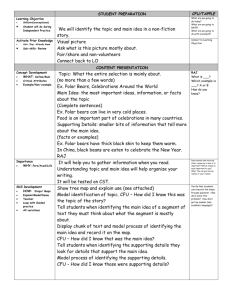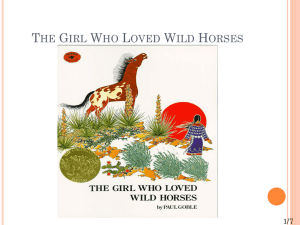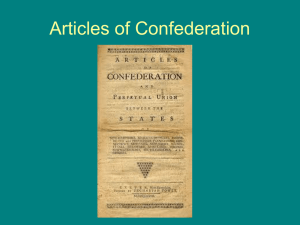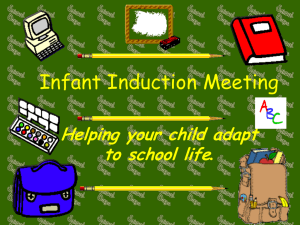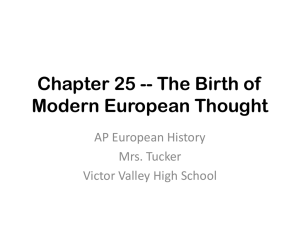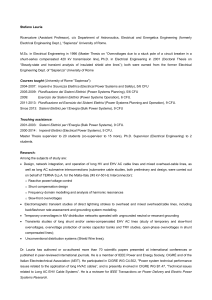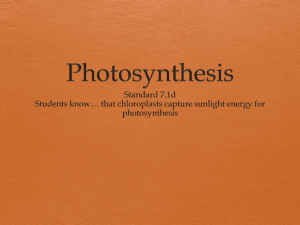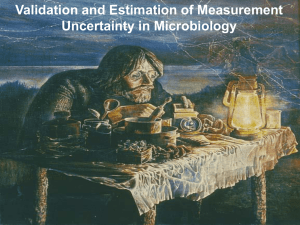Checking-for-Understanding
advertisement
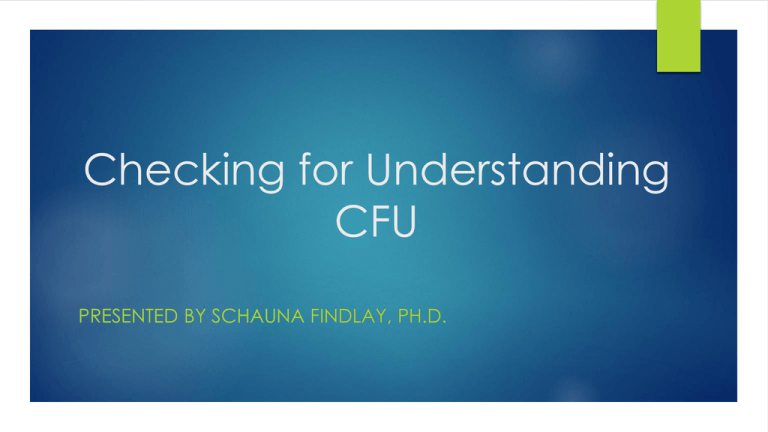
Checking for Understanding CFU PRESENTED BY SCHAUNA FINDLAY, PH.D. CFU Big Ideas: When we check all students’ levels of understanding throughout each lesson, it sets the tone that everyone’s thinking is important and necessary, and we forward the learning and engagement of all. The session focuses on key techniques which can be shared with teachers so that they are able to quickly track learning and adapt instruction appropriately on the spot. CFU Guiding Questions How do I know that they learned what I wanted them to learn? How well did they learn the objective? Who mastered it and who didn't? Which parts of the objective did students struggle with? What misconceptions did they have? A sample CFU cycle (TAPPLE): Teach Ask First a Question Pause, Pick Pair Share and Non-Volunteer Listen & Effective Feedback Unpack the standards 5.RL.1.1 (CCSS.RL.1) Quote accurately from a text when explaining what the text says explicitly and when drawing inferences from the text. Explain Draw explicitness of text by quoting accurately inferences using textual information. Unpack the standards 5.RL.1.2 (CCSS.RL.2) Determine a theme of a story, drama, or poem from details in the text, including how characters in a story or drama respond to challenges or how the speaker in a poem reflects upon a topic; summarize the text. Determine the theme of a story, drama, or poem using details in the text. Explain how characters respond to challenges. Explain how the speaker reflects upon a topic Summarize key ideas and details of a story, drama, or poem. Summarize how characters respond to challenges Summarize how the speaker reflects upon a topic. Summarize text. Ask questions that ensure students are meeting the goals of the standard Use questions and prompts such as: Can you tell me the reasons why you think…? Show where you linked your thinking to the text. What are the most important events that happened in the story? How do you know? What is the theme of this text? Summarize the story from beginning to end in a few sentences. Can you tell me how the character solved the problem in this story? Unpack the standards IAS.3.NS.3 (CCSS.3.NF.1) Understand a fraction, 1/b, as the quantity formed by 1 part when a whole is partitioned into b equal parts; understand a fraction, a/b, as the quantity formed by a parts of size 1/b. [In grade 3, limit denominators of fractions to 2, 3, 4, 6, 8.] Identify a fraction such as 2/3 and explain that the quantity formed is 2 equal parts of the whole partitioned into 3 equal parts (1/3 and 1/3 of the whole 3/3) Recognize a unit fraction such as 1/4 as the quantity formed when the whole is partitioned into 4 equal parts. Express a fraction as the number of unit fractions; Use accumulated unit fractions to represent numbers equal to, less than, and greater than one (1/3 and 1/3 is 2/3; 1/3, 1/3, 1/3, and 1/3 is 4/3). Generate Text Dependent Questions Generate text dependent questions or questions which help students clarify the task or their thinking or questions which advance their thinking. These questions should be sequenced in the lesson and teachers should have a plan for when they will ask these questions. Higher Level Questions Understand and use Bloom’s Cue Questions to ensure high thinking demand in the check for understanding questions. Checking for Understanding: A sample cycle (TAPPLE): Teacher Ask First a Question Pause, Pick Think-Pair-Share and Non-Volunteer Listen & Effective Feedback Checking for Understanding: A sample cycle (TAPPLE): Teacher Ask First a Question Pause, Pick Think-Pair-Share and Non-Volunteer Listen & Effective Feedback Checking for Understanding: A sample cycle (TAPPLE): Teacher Ask First a Question Pause, Pick Think-Pair-Share and Non-Volunteer Listen & Effective Feedback
